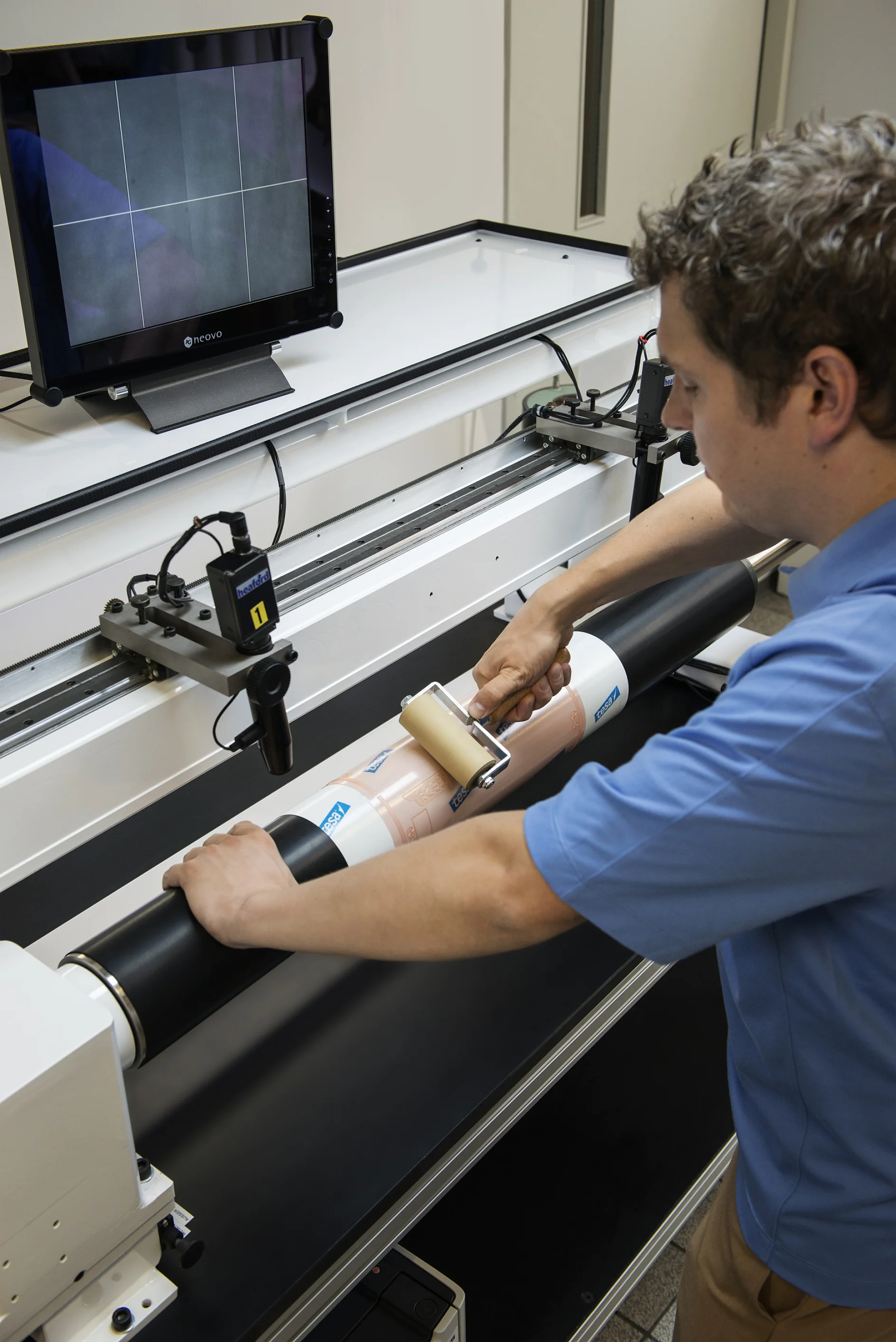How can plate mounting tapes help with creating a high-quality printed product?
High print quality at high press speed can be directly associated with the quality of the foam used in the plate mounting tapes. Remember, the plate mounting tape serve as the cushioning or support mediums between the state-of-the-art printing tapes and the state-of-the-art press. Industry suppliers strive to engineer the most technologically advanced presses, plates, and ink formulations to promote the highest print quality. If, however, the wrong plate mounting tape is used, the print quality can suffer greatly regardless of the quality of the hardware.
When evaluating foam, it is important to understand how the quality of foams correlate to the quality of specific types of printing. For example, new plate technology is currently available for printing fine screens of 5 percent, 3 percent, 1 percent, or even dot with high line-screen plates of 200 lines per inch or even higher. Rendering these results in a daily production environment at enhanced production speeds requires a very specialized type of “soft” plate mounting tape that can act as a shock absorber. This shock absorbing effect mitigates dot gain and any bouncing in the cylinders or sleeves that can appear as “chatter”, “banding” or “gear marks” in the print. Additionally, this “soft” tape must be able to compress and return to the same thickness from the first impression to the last impression regardless of whether the print job is a few thousand feet or a few million feet in length.
This compression and recovery of the foam, and the consistency of the cushioning effect, are the most factors in maximizing your investments in state-of-the-art presses and plate technologies. Choose a plate mounting tape that provides the unique qualities of the best shock absorption to achieve those very fine highlights and one that can perform over prolonged print runs.
Conversely, to realize optimal application of solid ink density for flood coats requires many of the same requirements. The harder plate mounting tapes that are required to provide the support for proper solid ink density coverage must also maintain their consistency of hardness. Furthermore, the harder tapes must also maintain the same high compression and recovery properties over long periods of time in order to maximize the quality of print results at higher speeds.
The message is clear; do not lessen the quality of your technological investments in presses, inks, anilox or plates by using anything less than the highest quality plate mounting tapes.
How important are plate mounting tape adhesives to the overall printing outcome?
Without a doubt, the adhesive properties of the plate mounting tape are as equally important as the foam quality. The efficiency and process repeatability of mounting and demounting flexographic printing plates can make the difference between being profitable by prolonging the useful life of plates, or ruining plates and having to buy new ones. The adhesive can be the distinguishing factor between having to clean adhesive and foam residue off every sleeve or cylinder when the job is stripped, or having the tape remove cleanly with little to no required cleaning.
The adhesive requirements are simple: Bond to the sleeves/cylinders and plates as securely as possible during printing to completely eliminate any possibility of plate edge lifting or bubbling; and when the job is done, remove as easily as a siliconized liner. This ideal, however, has been difficult for many narrow-web printers to realize.
How can printers overcome plate edge lifting or bubbling?
On a daily basis, most narrow-web printers contend with printing plate edge lifting because of the use of thicker plates on narrow diameter cylinders, or damaged printing plates because the adhesion to the plate is so high they either stretch or tear during demounting.
To overcome edge lifting, printers have used primers, magic markers, edge sealers and tapes. Additionally, many printers have used adhesion blockers (such as talc, chalk, soap or shellac) to make plate removal easy enough so as not to destroy the plates. All of these techniques, however, make it extremely difficult to create an SOP (standard operating procedure) that is efficient and repeatable. In fact, with so many materials and variables in such a process, repeatability is virtually impossible.
When process replication and repeatability is not achievable, process efficiency is impossible. To achieve repeatability and efficiency, the printer must choose a proper plate mounting tape specifically engineered with today’s printing technologies and processes in mind. When selecting a plate mounting tape, be sure to select one that has a plate-side adhesive that is made for the plate material and thickness being used. If an incorrect tape is selected, prevalent edge lifting can occur with thicker plates, or torn or stretched plates with thin plates. Additionally, be sure to choose an adhesive that is designed to bond to the cylinder or sleeves material being used. Using the wrong “open-side” adhesive can result in either bubbling or labor-intensive clean up.
Do you have any other tips for printers to get the best outcome?
In trying to ensure the proper use of plate mounting tapes, the most important factor is good communication with your plate mounting tape manufacturer. You must be clear in communicating the materials used in your printing process; the area coverage; desired percentage dot gain; line screen of the plates; desired press speeds, etc.
Many plate mounting tape suppliers offer a wide variety of foam tapes with varying hardness levels and adhesive combinations. Conducting trials is always a wise choice when testing a variety of tapes with various press material combinations. In the end, doing your homework by choosing the right tapes for your press room dynamics will help to maximize both your investments and your customer’s experience.
By Erin J. Wolford, Editor-in-Chief, Flexible Packaging, www.flexpackmag.com

